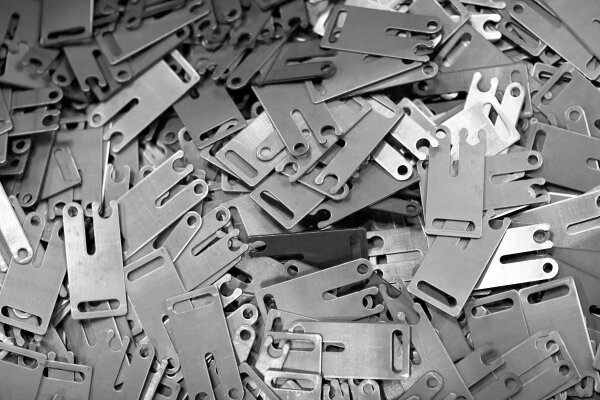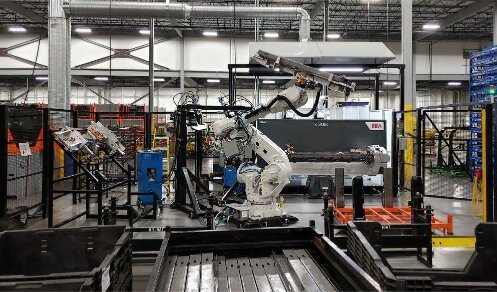전자 제품 제조의 일반적인 과제는 열에 민감한 부품을 손상시키지 않으면서 정확하고 반복 가능한 납땜 접합부를 만드는 것입니다. 기존의 납땜 방법은 정밀도가 부족하고 과열을 유발하며 일관되지 않은 결과를 초래하는 경우가 많습니다. 레이저 납땜은 이러한 문제에 대한 신뢰할 수 있는 솔루션을 제공합니다.
레이저 납땜이 어떻게 작동하고 프로젝트에 어떻게 적용되는지 궁금하신가요? 레이저 납땜의 원리, 응용 분야 및 이점에 대해 알아보세요.

레이저 납땜이란 무엇인가요?
레이저 납땜은 집중된 레이저 빔을 사용하여 땜납을 녹이고 재료를 접합합니다. 레이저는 부품을 건드리지 않고 땜납을 가열하여 깨끗하고 강력한 결합을 만들어냅니다. 이 방법은 정밀도가 중요한 섬세하거나 복잡한 부품에 이상적입니다.
기존 납땜과 달리 레이저 납땜은 물리적 접촉이 필요하지 않으므로 민감한 부품이 손상될 위험이 적습니다. 일관된 결과를 제공하는 비침습적 기술입니다.
레이저 납땜과 기존 납땜 기술의 주요 차이점
레이저 납땜과 기존 방식에는 뚜렷한 차이점이 있습니다. 다음은 간단한 비교입니다:
- 접촉 대 비접촉: 기존 납땜은 재료에 닿는 도구를 사용합니다. 레이저 납땜은 빔을 사용하여 물리적 접촉을 피합니다.
- 열 제어: 레이저는 정밀한 열을 전달하여 손상 위험을 줄여줍니다. 기존 방식은 주변 부위가 과열될 수 있습니다.
- 속도: 레이저 납땜은 특히 복잡한 작업에서 더 빠릅니다.
- 응용: 레이저 납땜은 섬세하거나 복잡한 작업에 탁월합니다. 보다 간단하고 대규모 작업에는 전통적인 방법이 더 좋습니다.
레이저 납땜의 기초
레이저 납땜은 재료를 정밀하고 효율적으로 접합하는 방법입니다. 하지만 어떻게 작동하며 무엇이 그렇게 효과적인 것일까요? 자세히 알아보겠습니다.
레이저 납땜의 작동 원리: 핵심 원리
레이저 납땜은 집중된 빛 에너지를 사용하여 납땜 재료를 녹는점까지 가열하여 접합부를 생성합니다. 레이저 빔이 대상 영역에 닿으면 프로세스가 시작됩니다. 재료가 빛 에너지를 흡수하여 열로 변환합니다. 이 열은 솔더를 녹여 접합 부위로 흘러들어갑니다. 땜납이 식으면서 견고한 전기적, 기계적 연결을 형성합니다.
납땜에 사용되는 레이저 소스 유형
납땜에는 용도에 따라 다양한 레이저가 사용됩니다. 가장 일반적인 유형은 다음과 같습니다:
파이버 레이저
파이버 레이저는 작고 효율적입니다. 전자 부품 납땜과 같은 작고 정밀한 작업에 적합하며 에너지 밀도가 높아 정밀한 작업에 이상적입니다.
다이오드 레이저
다이오드 레이저는 다목적이며 비용 효율적입니다. 다이오드 레이저는 산업용 애플리케이션에 자주 사용됩니다. 다이오드 레이저는 일관된 성능을 제공하며 자동화 시스템에 쉽게 통합할 수 있습니다.
CO₂ 레이저
CO₂ 레이저는 견고하고 비금속 재료에 잘 작동합니다. 납땜에는 덜 일반적이지만 특수한 작업에는 유용합니다.
레이저 납땜에 적합한 재료
레이저 납땜은 다양한 재료에 사용할 수 있습니다. 가장 일반적인 재료를 살펴보겠습니다:
레이저 납땜에 일반적으로 사용되는 금속
- 구리: 전도성 때문에 전자제품에 널리 사용됩니다.
- 골드: 내식성이 뛰어나 하이엔드 애플리케이션에 이상적입니다.
- 은: 뛰어난 열 및 전기적 특성을 제공합니다.
이러한 금속은 납땜이 쉽고 강력하고 안정적인 결합을 제공합니다.
비금속 재료와 그 과제
- 세라믹: 전자제품 및 의료 기기에 사용됩니다. 균열이 생기지 않도록 조심스럽게 다루어야 합니다.
- 플라스틱: 일부 유형은 납땜이 가능하지만 내열성이 낮은 경우가 많습니다.
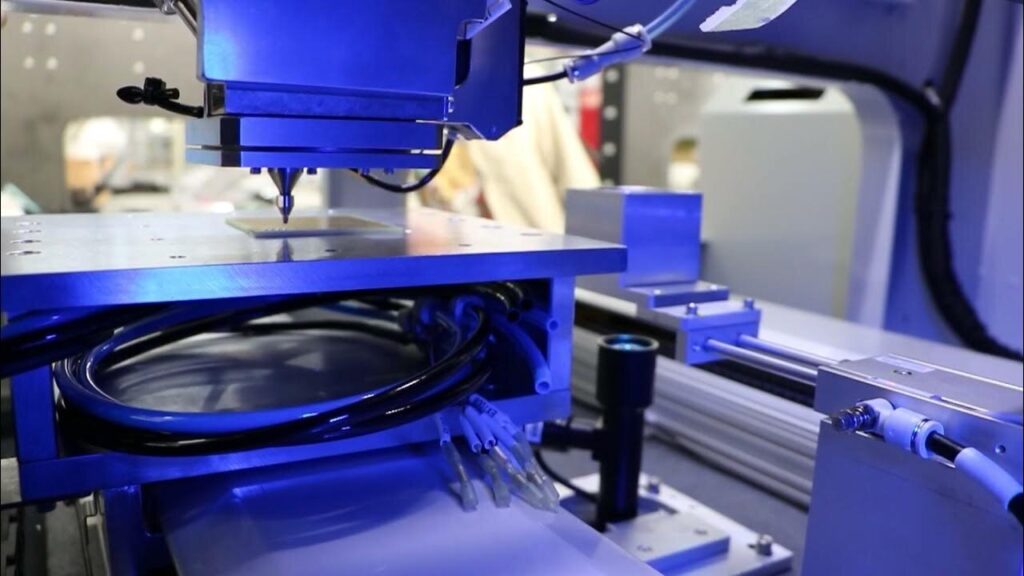
단계별 레이저 납땜 공정
레이저 납땜은 신중한 준비와 실행이 필요한 정밀한 공정입니다. 다음은 작동 방식에 대한 단계별 가이드입니다.
1단계: 자료 준비하기
시작하기 전에 재료가 깨끗하고 준비되었는지 확인하세요. 표면의 먼지, 기름, 산화물을 모두 제거합니다.
2단계: 레이저 매개변수 설정하기
다음으로 레이저 설정을 구성합니다. 여기에는 출력, 빔 크기, 지속 시간이 포함됩니다.
3단계: 플럭스 적용(필요한 경우)
플럭스는 땜납의 흐름과 접착력을 개선하는 데 도움이 됩니다. 필요한 경우 접합 부위에 바르세요.
4단계: 레이저 가열 및 납땜 용융
이제 레이저가 땜납을 가열합니다. 빔이 땜납을 조준하여 땜납을 녹여 결합을 형성합니다.
5단계: 냉각 및 응고
가열 후 땜납을 식히고 굳히세요. 이렇게 하면 튼튼하고 내구성 있는 조인트가 형성됩니다.
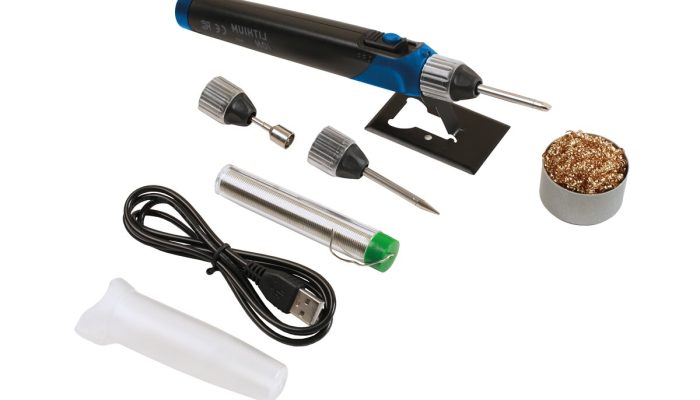
레이저 납땜의 장점
레이저 납땜은 정밀도, 속도, 품질, 다용도성이 뛰어납니다. 이러한 장점으로 인해 많은 산업 분야에서 최고의 선택이 되고 있습니다. 자세히 살펴보겠습니다.
정도
레이저 납땜은 정확한 정확도를 제공합니다. 집중된 빔은 주변 부품에 영향을 주지 않고 대상 영역만 가열하므로 전자, 의료 기기 및 기타 정밀 산업의 섬세한 부품에 이상적입니다.
속도
이 공정은 기존 납땜 방식보다 빠릅니다. 즉시 열을 가하고 몇 초 만에 접합을 완료하여 생산 시간을 단축하고 특히 자동화된 제조에서 효율성을 높입니다.
품질
레이저 납땜은 결함을 최소화하면서 깨끗하고 일관된 접합부를 생성합니다. 제어된 열은 산화, 뒤틀림, 열 스트레스를 줄여 최종 제품의 강도와 신뢰성을 향상시킵니다.
다재
레이저 납땜은 금속을 포함한 다양한 재료에 사용할 수 있으며 코팅된 표면. 다양한 모양과 크기에 맞게 조정할 수 있어 전자 제품부터 자동차 제조까지 다양한 산업에 적합합니다.
레이저 납땜의 과제
레이저 납땜은 많은 이점을 제공하지만 어려움이 없는 것은 아닙니다. 이러한 장애물을 이해하면 레이저 납땜이 자신의 요구에 적합한 선택인지 결정하는 데 도움이 될 수 있습니다.
재료 호환성 문제
모든 재료가 레이저 납땜에 적합한 것은 아닙니다. 알루미늄과 구리 같은 일부 금속은 레이저 에너지를 반사하기 때문에 가공하기가 더 어렵습니다. 흡수를 개선하기 위해 특수 코팅이나 표면 처리가 필요할 수 있습니다.
장비 비용 및 초기 투자
레이저 납땜 시스템에는 고급 기술이 필요하므로 비용이 많이 듭니다. 초기 투자에는 레이저 소스, 제어 시스템 및 안전 조치가 포함됩니다. 높은 초기 비용은 소규모 제조업체에게는 장벽이 될 수 있습니다.
프로세스 복잡성과 숙련된 운영자의 필요성
레이저 납땜 시스템을 운영하려면 교육과 전문 지식이 필요합니다. 레이저 출력, 빔 초점, 재료 특성 등의 요소를 신중하게 제어해야 합니다. 적절한 설정이 없으면 약한 접합부나 과열과 같은 결함이 발생할 수 있습니다.
레이저 납땜의 응용 분야
레이저 납땜은 다목적이며 많은 산업 분야에서 사용됩니다. 레이저 납땜은 정밀도와 신뢰성이 뛰어나 하이테크 애플리케이션에 이상적입니다. 레이저 납땜이 어떤 분야에 영향을 미치고 있는지 살펴보세요.
전자제품 제조
전자제품 제조업체는 회로 기판, 마이크로칩 및 기타 소형 부품을 조립할 때 레이저 납땜을 사용합니다. 이 공정은 과도한 열을 줄여 섬세한 부품을 보호합니다. 고품질의 반복 가능한 결과를 보장합니다.
자동차 산업
자동차 제조업체는 배선 하니스, 센서, 배터리 단자 등에 레이저 납땜을 사용합니다. 이 공정은 진동과 마모에 강한 접합부를 만들어 차량 내 전자 부품의 내구성을 향상시킵니다.
항공우주 및 국방
항공우주 및 방위 산업은 정밀하고 안정적인 납땜이 필요합니다. 레이저 납땜은 항공 전자 공학, 위성 및 통신 시스템에 사용됩니다. 레이저 납땜은 안전과 성능에 매우 중요한 높은 정확도와 일관성을 제공합니다.
의료기기 제조
의료 기기 제조업체 심박조율기, 보청기, 수술 도구에 레이저 납땜을 사용합니다. 이 공정을 통해 작고 정밀한 접합이 가능합니다. 또한 열 손상을 줄여 부품의 안전과 기능을 유지합니다.
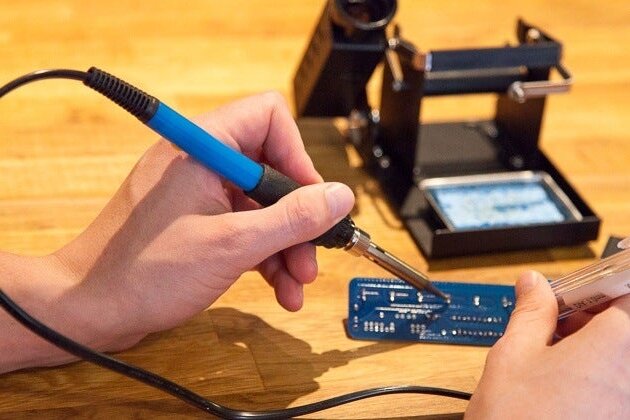
레이저 납땜 모범 사례
레이저 납땜으로 최상의 결과를 얻으려면 다음 모범 사례를 따르세요. 고품질 접합과 효율적인 프로세스를 보장합니다.
다양한 재료에 대한 레이저 파라미터 최적화
재료마다 다른 레이저 설정이 필요합니다. 재료와 납땜 유형에 맞게 출력, 빔 크기 및 지속 시간을 조정합니다.
- 전력 수준: 두꺼운 소재에는 더 높은 출력, 섬세한 부품에는 더 낮은 출력.
- 빔 포커스: 정밀도를 위해 더 작은 빔, 더 넓은 영역을 위해 더 큰 빔.
- 난방 시간: 융점이 높은 땜납은 더 길고, 융점이 낮은 땜납은 더 짧습니다.
고품질 조인트를 위한 적절한 표면 준비
납땜하기 전에 표면을 깨끗이 닦고 준비하세요. 이렇게 하면 납땜이 제대로 결합하는 데 도움이 됩니다.
- 표면 청소: 먼지, 기름기, 산화를 제거합니다.
- 표면 다듬기: 가벼운 마모는 접착력을 향상시킬 수 있습니다.
- 플럭스 적용: 플럭스를 사용하여 납땜의 흐름과 접착력을 향상시킵니다.
프로세스 모니터링 및 결함 감지 전략
납땜 공정을 모니터링하여 문제를 조기에 발견하세요. 도구와 기술을 사용하여 결함을 감지합니다.
- 실시간 모니터링: 카메라 또는 센서를 사용하여 프로세스를 관찰합니다.
- 조인트 검사: 균열, 빈 공간 또는 불완전한 결합이 있는지 확인합니다.
- 필요에 따라 조정: 결함이 발견되면 설정을 변경합니다.
결론
레이저 납땜은 재료를 접합하는 정확하고 빠르며 신뢰할 수 있는 방법입니다. 집중된 레이저 빔을 사용하여 납땜을 녹여 주변을 손상시키지 않고 강력한 결합을 만듭니다. 이 기술은 섬세하거나 복잡한 부품에 이상적이며 전자, 자동차, 항공우주 및 의료 기기 분야에서 최고의 선택입니다.
정밀도, 속도, 품질을 모두 갖춘 솔루션을 찾고 있다면 레이저 납땜이 해답이 될 수 있습니다. 문의하기 를 통해 레이저 납땜이 프로젝트에 어떤 이점을 제공하는지 알아보세요. 귀사의 요구 사항을 논의하고 가장 적합한 솔루션을 찾아보세요!
안녕하세요, 저는 케빈 리입니다

지난 10년 동안 저는 다양한 형태의 판금 제작에 몰두해 왔으며 다양한 워크숍에서 얻은 경험에서 얻은 멋진 통찰력을 이곳에서 공유했습니다.
연락하세요

케빈 리
저는 레이저 절단, 굽힘, 용접 및 표면 처리 기술을 전문으로 하는 판금 제조 분야에서 10년 이상의 전문 경험을 갖고 있습니다. Shengen의 기술 이사로서 저는 복잡한 제조 문제를 해결하고 각 프로젝트에서 혁신과 품질을 주도하는 데 최선을 다하고 있습니다.

